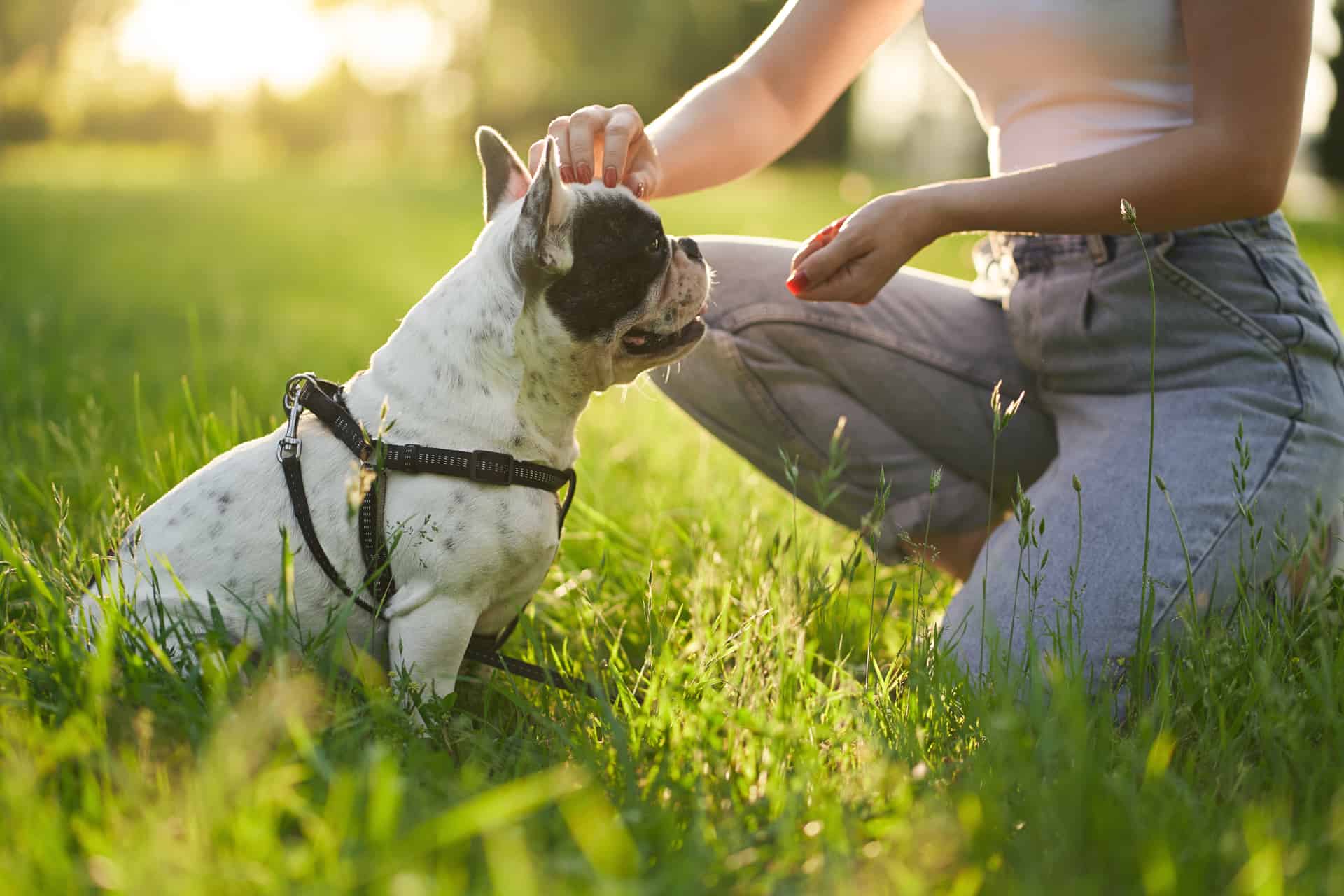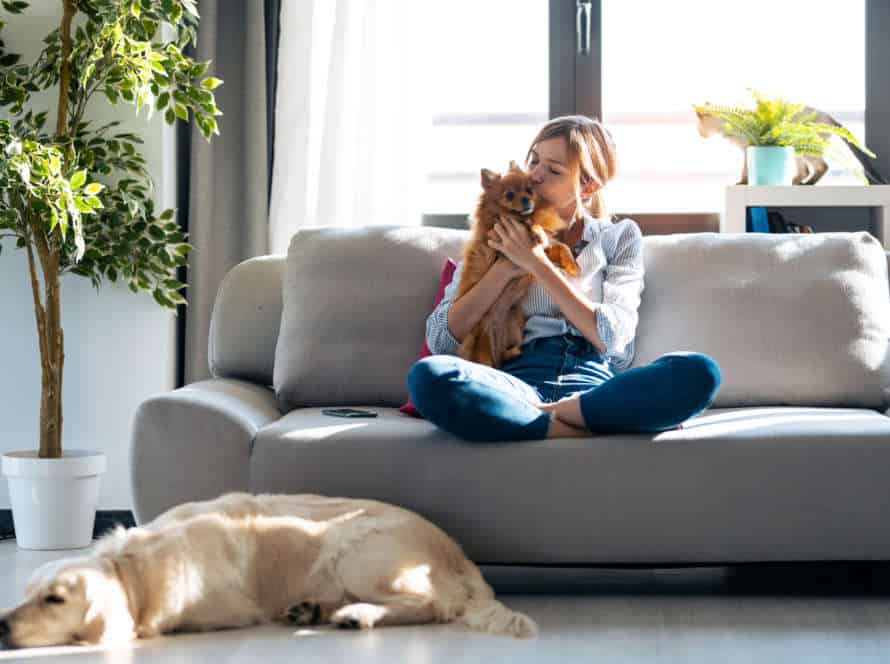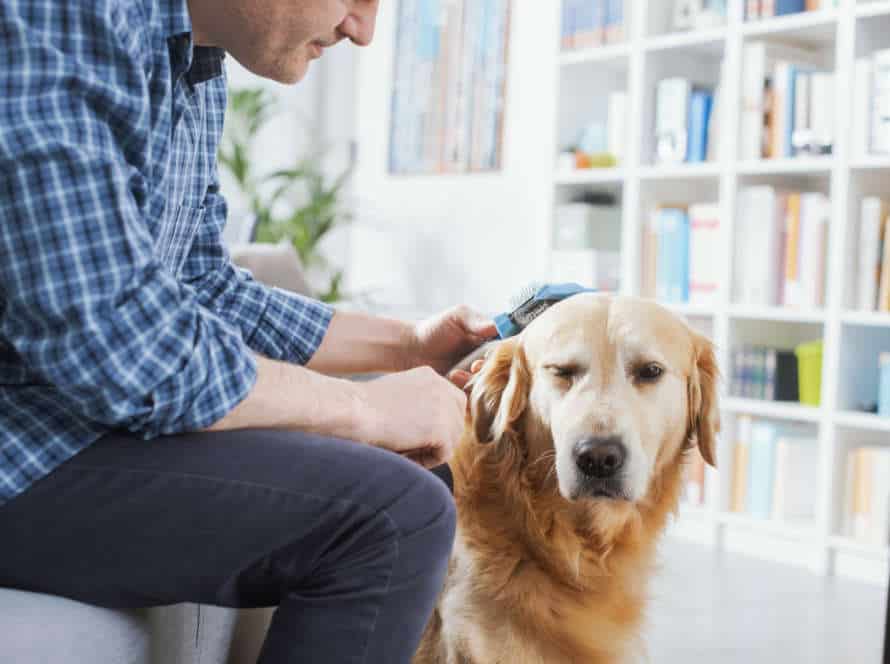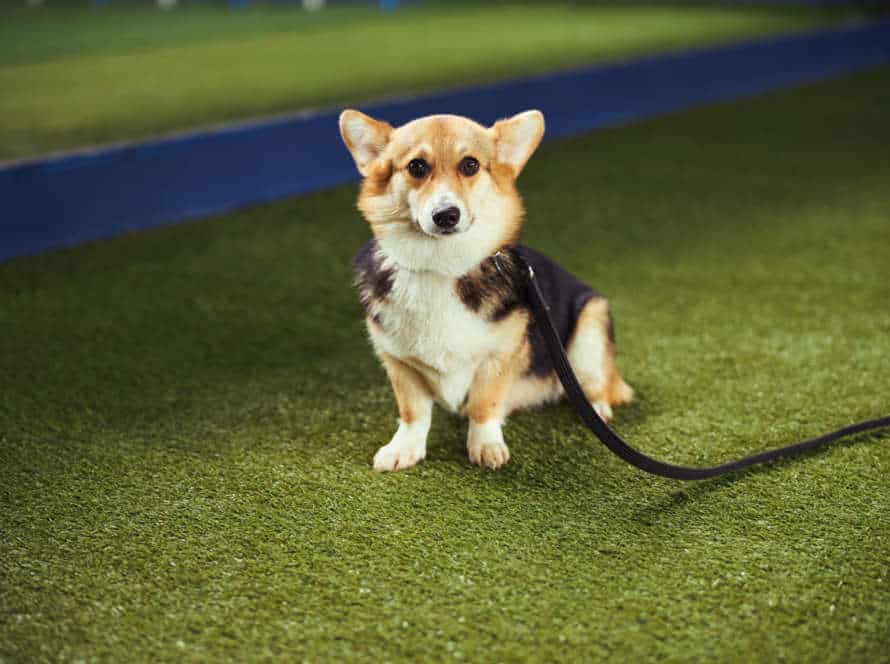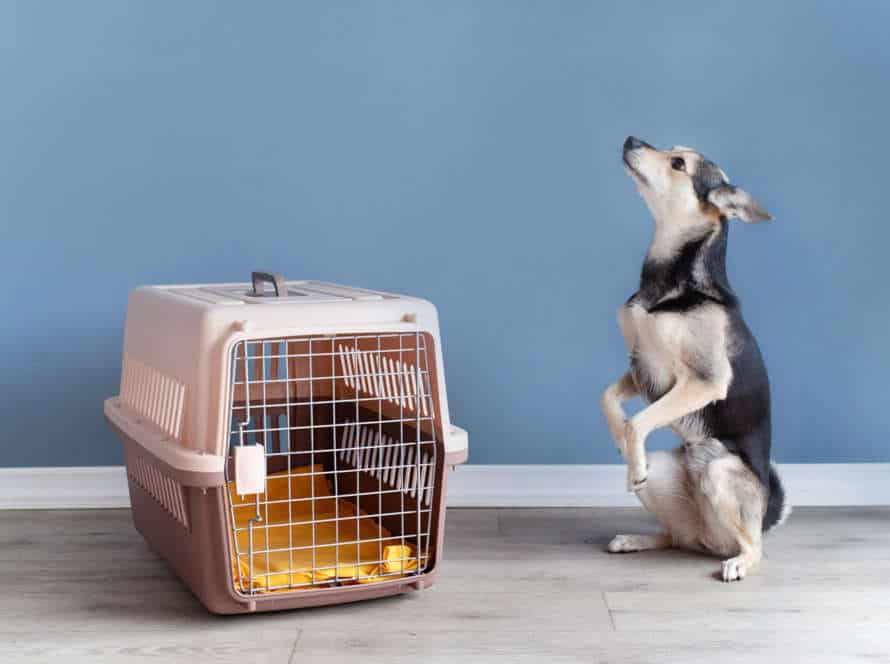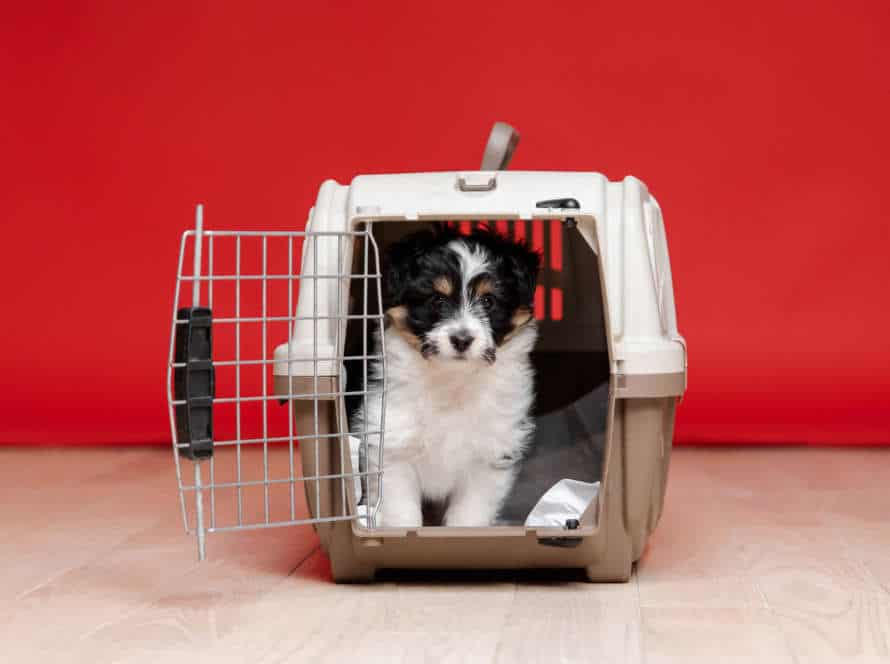Building Confidence in Your Reactive Dog for Leash Walking Success
It’s essential to build your reactive dog’s confidence to make leash walking successful. Reactive dogs usually have anxiety or aggression, which can cause them to respond badly to certain things like other dogs, people or noises. Here are a few tips to help you:
- Identify what triggers a reaction and try to stay away from it during walks. Gradually introduce these triggers in controlled situations to help your dog cope. Start at a distance they are comfortable with and take things slow.
- Do basic commands like sit, heel and stay with your pup, rewarding them when they obey. This will not only get them to listen to you, but also help them focus away from the stimuli that can cause reactivity.
- Use positive reinforcement like treats, compliments or toys to motivate and boost their confidence. This will help them believe in themselves and the environment around them.
Building confidence in your dog takes time and patience. However, consistent effort and positive reinforcement will help your dog overcome its fears and anxieties, leading to successful leash walking.
Understanding Your Reactive Dog
Having a reactive pup can be intense. Before leash walking, it’s key to comprehend why your dog is being reactive. To get successful leash walking, here are some tips to help understand your reactive dog better:
- Build their confidence!
Identify your dog’s triggers
Identifying your pup’s triggers is key for understanding & managing their reactive behavior. This helps build confidence for leash walking.
Triggers are stimuli that make your dog react in a way that can be aggressive or disproportionate, like barking or pulling on the leash. Examples include other dogs, people, noises, cars & bicycles.
Observe your pup’s body language & behavior when exposed to different triggers. Note any patterns & make a list of the triggers.
Once identified, work with a trainer to create a plan to desensitize them to the triggers. This could include counter-conditioning, positive reinforcement training, & exposing them to the trigger under controlled conditions gradually.
Pro Tip: Be consistent & patient! Reactive behavior can take time to overcome, but with the right approach, you can have a strong, confident, & well-behaved dog.
Recognize your dog’s body language
Recognize your pup’s body language to get a better understanding of their reactive behaviour and for successful lead walks. There are common signs – like ears back & low, tail between their legs, raised hackles, stiff posture, panting & pacing. Knowing these signs can help you predict their reactions & stop triggers from causing reactivity. Plus, positive reinforcement training builds confidence & comforts them during walks. Pro tip: Consult a professional if you’re dealing with reactive pooches!
Learn to manage your dog’s environment
If your pup is reactive, it’s essential to learn how to handle their atmosphere. This will help build confidence and have successful leash walks. Remember these tips:
- Identify triggers and stay away from them.
- Reward calm behaviour on walks with treats.
- Take them to new places, people and animals slowly and in a positive way.
- Make sure they get a chance to work off energy before leash walking.
- Use a comfy harness or head collar to control their movements and take pressure off the neck.
By controlling the environment and taking tiny steps, you can boost your pooch’s confidence and make the leash walk a fun experience for both of you!
Training and Socialization Techniques
Training and socialization are must-haves for leashing your reactive pup. This helps build a strong bond between you. It also encourages your pup to feel at ease in new situations. Here’s how you can use these techniques to boost your dog’s confidence:
Counterconditioning and desensitization
Counterconditioning and desensitization are scientifically proven methods to help a reactive pup succeed with leash walking. Counterconditioning is linking a positive experience with an earlier stressful trigger. Desensitization involves exposing the dog slowly to the trigger in a controlled atmosphere until it can handle it without fear.
To implement these techniques during leash walks:
- Identify the triggers and decide the threshold distance.
- Introduce a low intensity trigger away from the threshold.
- Reward and praise when the pup is calm.
- Decrease the distance between pup and trigger gradually.
- Be patient and don’t push the pup beyond its threshold.
With consistent practice, the reactive pup can become more secure and at ease on its leash walks.
Reward-based training
Reward-based training is a method of positive reinforcement to boost the confidence of reactive dogs while they are leash walking. To do this, you must:
- Work out what rewards your pup loves – like treats, playthings or compliments.
- Set small goals for them such as walking a few steps without being affected by other canines or people.
- Whenever they behave positively, give them the reward straight away – to reinforce the behavior.
- Gradually increase the difficulty of the goals as their behavior improves and keep rewarding them.
- With dedication and consistency, reward-based training can help make reactive dogs more confident and better at leash walking.
Controlled exposure to triggers
Controlled exposure to triggers is essential to boost confidence in your reactive pooch. To do this:
- Start by identifying the triggers (e.g. other dogs, people, bikes, etc.).
- Create distance between your dog and the trigger.
- Give rewards when your dog stays calm and focused on you.
- Little by little, reduce the distance as your pet feels more comfortable.
- Repeat the same process with different triggers and in other settings.
- Start with low-stress settings then increase difficulty level.
- Consistency and patience are key.
- With time and practice, your dog will become less reactive and more confident in various settings.
Leash Walking Techniques
Leash walking can be scary for reactive dogs and their owners. It takes time, patience, and consistency to make it successful. Here’s how you can build confidence in your pup:
- Practice the right leash walking tactics!
Loose leash walking training
Leash walking training is a must-have for pet and pet owner. It creates good behavior and a strong bond. Loose leash walking is a great way to prevent pulling and make walks enjoyable. Here are some tricks to succeed:
- Start with small walks and avoid busy places.
- Get a proper dog harness to protect your pet from choking/injury.
- Use positive reinforcement and treats to reward.
- Train your pup to stop and start in response to leash tension.
- Be patient and consistent. This will help your dog build trust, leading to successful leash walking.
Choosing the right leash and collar/harness
Choosing the right leash and collar/harness is essential for a successful leash walk with your reactive dog. Here are some tips to help you:
Leash:
- For dogs that pull, consider a front-clip harness. This will redirect their attention towards you.
- Retractable leashes should be avoided.
- Standard 6-foot leashes provide good control.
Collar/harness:
- Choose one that fits snugly. Two fingers should fit between it and your dog’s skin.
- Flat or rolled collars are suitable. Avoid prongs or electronic shock devices.
- If your dog has respiratory issues, a chest harness may be better than a collar.
By picking the right leash and collar/harness, your dog can build confidence and become a pro at leash walking.
Using positive reinforcement during walks
Positive reinforcement during walks is awesome for your reactive pup! It helps build their confidence and better their leash walking.
- Reward desirable behaviour with treats or verbal praise.
- Take them on walks to their fave places.
- Use a clicker or say “Yes!” to mark & reward good behaviour, like sitting still and not barking or lunging.
- Don’t punish ’em for misbehaving. Instead focus on rewarding positive behaviour with treats, praise, and playtime.
Building Your Dog’s Confidence
Having a successful leash walk is key. To start, teach your pup that the leash is a cue for something great! Building their confidence also helps them to handle new settings and learn quickly. Here are some tips to boost their confidence:
Encouragement and patience
Constructing your pup’s self-assurance needs time, cheer, and tolerance. Especially when trying to construct confidence in a reactive dog for leash walking. Identify the sparks that set off your dog’s reactions. Then gradually expose them to those triggers in a managed and good atmosphere. Give positive reinforcement training, reward your dog for being tranquil and divert any bad behavior.
Plus, do basic obedience training to form your dog’s trust in you and its own capabilities. Increase the level of difficulty in the workouts steadily and finish on a nice note. You must stay patient, not race the process. Every dog’s path to greater self-confidence is unique and requires personalized approaches. Consistency in training and supplying a secure and caring environment can assist your pooch feel more self-assured and reduce their reactivity over time.
Exposure to new environments
Give your pup new experiences! It’s key for building their self-assurance, particularly if they have difficulty on the leash. Follow these tips to get going:
- Start small. Introduce them to places slightly different from what they’re used to. Gradually make it harder as they gain ease.
- Positive reinforcement. Give rewards, compliments and love when they do well in a new place.
- Patience. Let them explore at their own speed. Don’t push them into anything they’re not ready for.
- Consistency. Take them to new places regularly. This will help them build confidence and lower their reactivity.
Consistent training and daily exercise
Consistent training and daily exercise are vital for building your pup’s confidence and improving their leash-walking skills. Here’s why:
- Training: Have regular sessions to teach them good habits and form a trusting bond. Positive reinforcement, such as treats and praise, rewards them for good behavior and encourages them to keep doing it.
- Exercise: Necessary for physical and mental health. A tired dog is less likely to misbehave. Exercise also gives them an outlet for energy and boredom.
Pro Tip: Use a training leash, like a no-pull harness or head collar, to give you control over them while avoiding injury. Reward good behavior during leash walks to keep them on track.
Seeking Help from Professionals
Working with a pro to bolster confidence in your reactive doggy is a tremendous help and can save you time in the future. A pro can teach you the skills needed to help your reactive pup to stay relaxed when taking a leash walk. Furthermore, a professional can assist you in comprehending the triggers for your reactive pup’s fear reactions and can provide you with the tools and tactics to proactively prevent behaviors that are problematic. Let’s check out how a pro can help you and your reactive pup.
Working with a certified dog trainer
A certified dog trainer can help with your reactive pup’s confidence on a leash. It is important to find the right one. Here are some tips:
- Research – Look for one that specializes in reactive dogs and get references.
- Go to a class – Watch how the trainer interacts with the dogs and their owners.
- Check credentials – Make sure they are certified by a reputable org, like the CCPDT.
- Be honest – Explain your goals and your dog’s behavior.
Building this confidence takes time and patience. With a certified trainer and your commitment, your dog can do great.
Pro tip: Keep track of progress and watch your pup’s behavior to stay on track.
Consulting with a veterinarian or animal behaviorist
Struggling with your pup’s reactivity? Leash-walking not ideal? Get help from a professional animal behaviorist or vet!
Certified canine behavior consultants or veterinary behaviorists can assess your dog’s behavior and determine the cause of their reactivity. Plus, craft a personal plan to increase their confidence and reduce anxiety.
Consulting with a pro offers many benefits:
- Personalized, science-based approach to modify behavior.
- Unbiased advice and assistance.
- Monitor progress and adjust plan as need.
- Help understand and communicate better.
Tip: Building confidence is a process that needs time and patience. With pro help, create a long-term plan for a happier, healthier life for you and your furry companion.
Joining support groups and classes for reactive dogs
Joining classes & support groups for reactive dogs can help build confidence in them for successful leash walking. Reactive dogs can be anxious, fearful, or aggressive towards other dogs/people, making walks a challenge. Professional help can provide you with tailored training techniques to manage/modify behavior.
Benefits of joining such groups/classes include:
- A community of fellow dog owners who understand your struggles.
- Learning from experienced professionals in dealing with reactive dog behavior.
- Structured training sessions/exercises to help manage/overcome issues.
- Socialization opportunities in a controlled, safe environment.
- Improved confidence & trust between you & your dog.
Every reactive dog is unique, so seeking professional help is key to finding the right training approach for them.
Frequently Asked Questions
1. What is a reactive dog and how does it affect leash walking?
A reactive dog is one that displays exaggerated or frantic behavior when encountering various stimuli. This could include other dogs, people, animals, or objects. It can make leash walking challenging because the dog may pull or lunge toward the stimulus, making it difficult for the owner to control.
2. How can I build confidence in my reactive dog for leash walking?
Consistent positive reinforcement training that rewards good behavior and sets clear expectations can help build confidence in a reactive dog. Exposing the dog slowly and gradually to the stimuli that trigger their reactivity can also help them become more comfortable and less reactive over time.
3. Are there specific techniques or tools I should use when leash walking a reactive dog?
There are a variety of techniques and tools that can be used, depending on the dog and their individual needs. Some owners find success with treats or clicker training, while others may use a front-clip harness or head collar. It’s important to consult with a professional trainer for guidance on what may work best for your specific dog.
4. Can medication help with a reactive dog’s leash walking behavior?
In some cases, medication may be helpful in reducing a dog’s reactivity and improving their ability to handle leash walking. However, medication should always be prescribed and administered by a veterinarian, and should be used in conjunction with a comprehensive training plan.
5. How long does it take to see improvement in a reactive dog’s leash walking behavior?
The timeline for improvement can vary depending on the dog and the severity of their reactivity. Some dogs may show improvement after just a few training sessions, while others may require additional time and effort to see progress. Consistency and patience are key when working with a reactive dog.
6. How can I prevent my reactive dog from becoming overwhelmed during leash walking?
Keep walks short and consistent, and avoid areas with high levels of stimuli until your dog has built up more confidence. Take frequent breaks and provide plenty of positive reinforcement and praise for good behavior. Above all, listen to your dog and be responsive to their needs and limitations.

